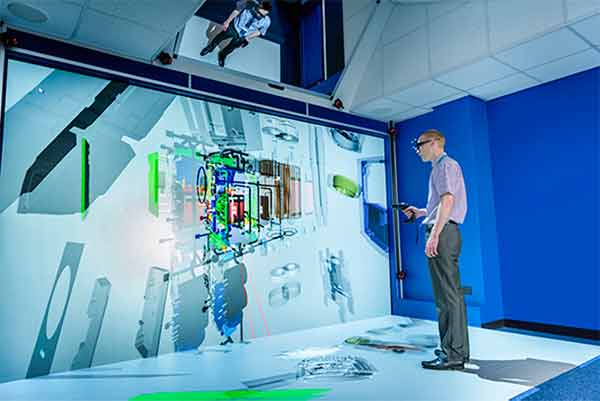Four tenets for making products and services more sustainable from the outset.
By Sef Tuma and Jan-Willem Jannink
Sustainability was a hot topic at Hannover Messe 2022, the world’s largest industrial trade show. Manufacturers, solution providers and consultants discussed how to change production to reduce emissions, avoid waste, and save and recycle resources. But where does sustainability fit into product development? Until recently, it was merely a “nice to have” checkmark for most product development units or even an afterthought.
Now engineers have become central to achieving sustainability, which needs to be prioritized alongside end-user experience, profitability and safety. Product development functions need to mandate sustainability from the start, so it can be measured from development to production, servicing and recycling.
Setting up sustainable product development has four tenets:
1. Think systems, not products.
Engineers need to address products as a complex system across the product lifecycle, from conception to reuse. From there, companies will be able to meet a myriad of interconnected goals, like circularity, clean water and net-zero.
These goals can be conflicting or complementing. One sustainability solution may lead to fewer carbon emissions but higher electricity usage. Or constructing something from wood – an actual carbon sink – instead of concrete could also create income closer to where the wood is grown and support education and better sanitation.
Then there’s the often-inverse relationship between measurement and outcomes to consider. Engineering for sustainability is easiest early in the development process but also challenging to measure. As development progresses, measuring the actual results becomes more reliable. The downside? Controlling or even changing these outcomes gets more difficult.
Engineers also need to weigh short-term outcomes against long-term impact. A consumer goods company recently pioneered a new refillable package for deodorant. While the new reusable container uses more material waste and energy short term, it’s much more effective in reducing the growth and scale of waste in the long run.
2. Silos sabotage sustainability.
A systemic approach requires a business environment that fosters true collaboration, first across functions and departments. Business silos cause misinformation, missteps and missed opportunities. Unfortunately, organizations are rife with siloed thinking and acting. In a 2020 survey from Accenture, 75 percent of executives said their departments compete rather than collaborate on digitization.
As siloes hinder sustainability, engineers need to work internally with researchers, sales reps, heads of manufacturing and supply chain leads. They need to do the same externally with clients, suppliers and key stakeholders. This will uncover synergies and allow them to mitigate any negative sustainability blowback from cradle to grave.
3. Cloud data is your best friend.
Providing engineers with data-driven insights that feed advanced analytics and machine learning are the key to understanding the impact of products on the environment and throughout their lifecycle.
However, traditional product lifecycle management (PLM) systems aren’t working. They aren’t built to bring together the required data points to measure sustainability and inform the respective product design and engineering decisions. An easy fix: move PLM to the cloud to integrate data more seamlessly.
The cloud also provides powerful analytics and computing resources to turn data into insights. These can help track information about the carbon footprint of certain materials and enable ongoing sustainability checks. If handled correctly, the data and simulations forecast where sustainability efforts will succeed or fail.
4. Simulation equals knowledge.
A digital twin is a living virtual replica of a product, process or asset, which can simulate its lifecycle and behavior under various circumstances. This virtual representation becomes even more powerful if it’s fed with live data from machines or processes in operation through IoT or edge computing technology.
Digital twins provide a deeper understanding of the impact of engineering decisions and designs on sustainability metrics. Research shows that digital twins could deliver up to 7.5 Gt CO2 emission reductions between 2021 and 2030. Furthermore, companies that apply digital twins to extending product life can better manage circularity – by facilitating repairs, promoting reuse and increasing overall recycling rates for materials and chemicals.

Digital twins are helpful across industries. In real estate and construction, they provide a clear understanding of how materials and resources like water and electricity can be more efficiently used. Dubai Electricity and Water Authority’s new headquarters is projected to utilize up to 50% less water than comparable buildings because of digital twin technology, while the building’s energy consumption could be less than what is produced on-site. A global computer hardware company applied digital twin technology to reduce the embedded carbon footprint of its latest model by 47%. It also created a computer shell made out of 100% recycled materials.
Sustainability should be at the forefront of every decision in the product development process from the outset. Engineers need to make it a core focus throughout the product lifecycle – from material sourcing to storage and shipping to end-of-life. Companies need to give them the right digital tools and systems and break down silos. Only then can engineers truly help transform corporate sustainability aspirations into reality.
Sef Tuma is a senior managing director and the global lead for engineering and manufacturing at Accenture Industry X. Jan-Willem Jannink is a managing director at Accenture Industry X with a focus on sustainability.
In this episode, I sat down with Beejan Giga, Director | Partner and Caleb Emerson, Senior Results Manager at Carpedia International. We discussed the insights behind their recent Industry Today article, “Thinking Three Moves Ahead” and together we explored how manufacturers can plan more strategically, align with their suppliers, and build the operational discipline needed to support intentional, sustainable growth. It was a conversation packed with practical perspectives on navigating a fast-changing industry landscape.